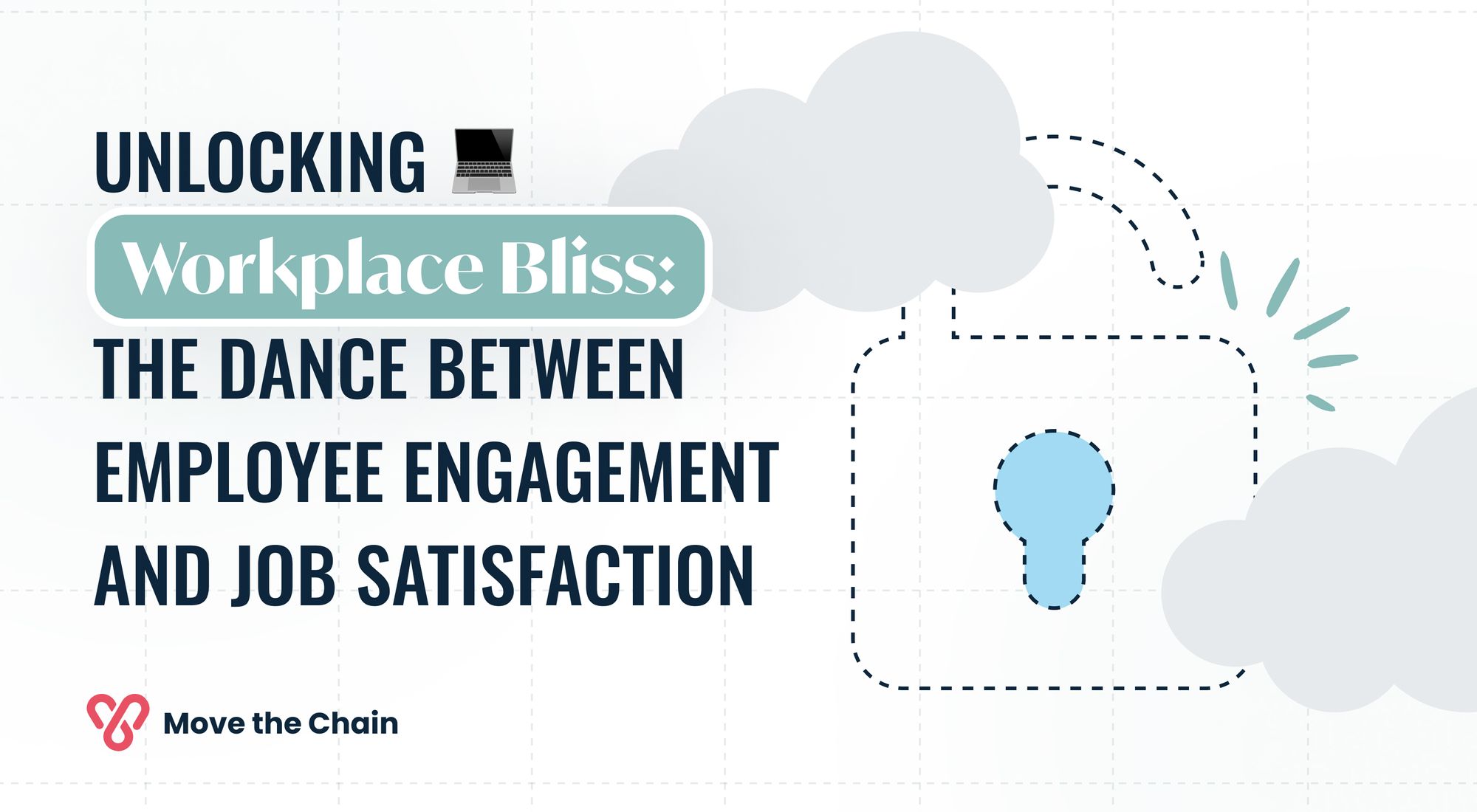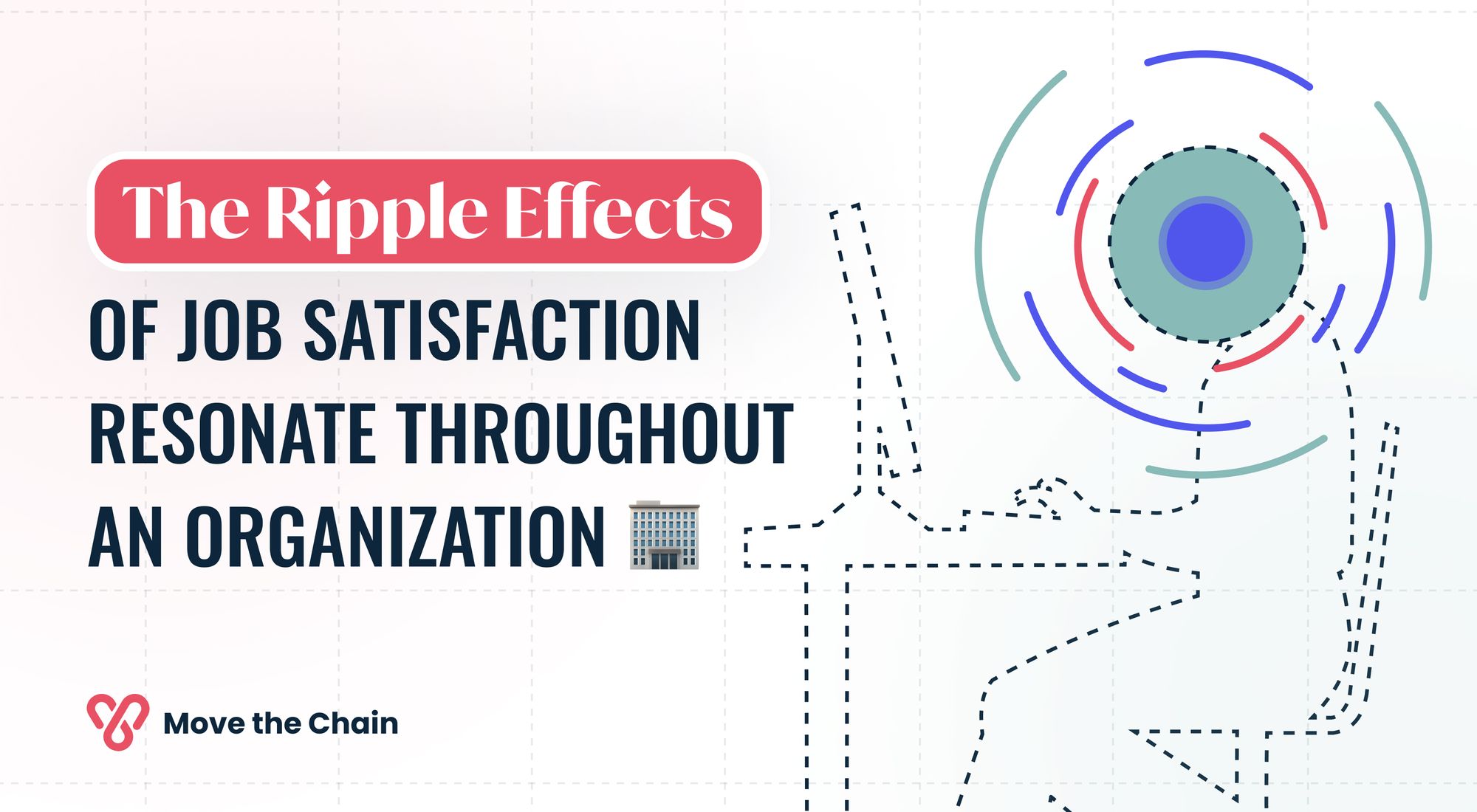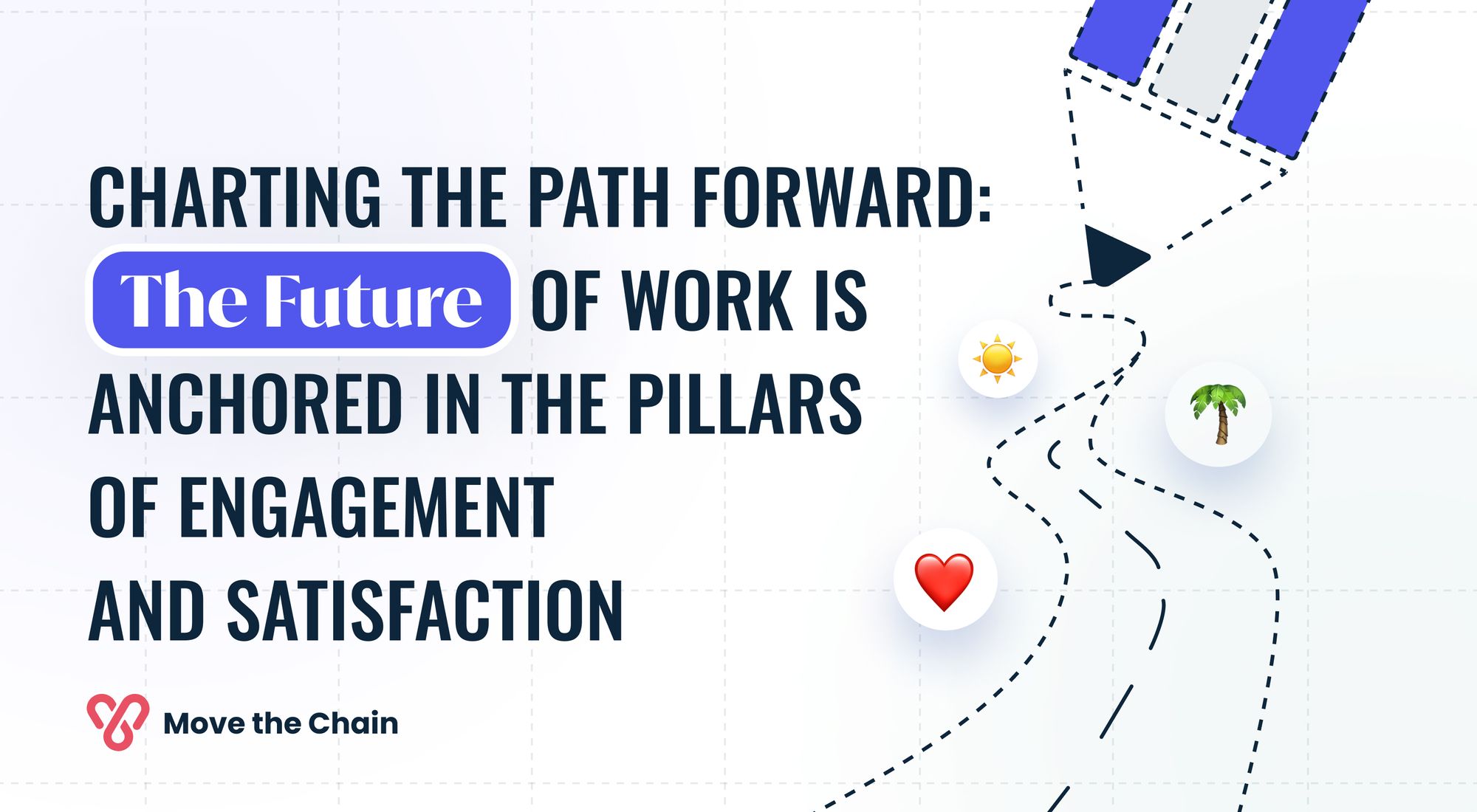Unlocking Workplace Bliss: The Dance between Employee Engagement and Job Satisfaction

In the bustling corridors of today's corporate world, a silent tug-of-war ensues. On one end, there's the relentless drive for productivity, the push to achieve more, innovate faster, and outpace competitors. On the other, there's the human element: the aspirations, emotions, and well-being of the very individuals powering these corporations.
This is the modern workplace dilemma: how do companies strike a balance between achieving peak productivity and ensuring the holistic well-being of their employees?
As we navigate this intricate landscape, one thing becomes clear: the traditional metrics of success are evolving. No longer is it just about the bottom line; it's about the people who drive it. And at the heart of this evolution lie two critical factors: employee engagement and job satisfaction.
We promise to take you on a journey, exploring the dynamic interplay between these two elements. We'll delve into why they matter, how they influence each other, and most importantly, how understanding this synergy can unlock unparalleled success and fulfilment in the workplace. Join us as we uncover the secrets of a truly harmonious and thriving work environment.
The Evolution of the Workplace
From Clocking Hours to Seeking Purpose
Gone are the days when a job was merely a means to an end, a straightforward exchange of time for money. Over the decades, the very essence of work has undergone a profound transformation. In the past, many sought stable, long-term employment, often remaining with a single company for the majority of their careers. The primary focus? Security and predictability. However, as we transitioned into the 21st century, a seismic shift occurred.
Employees began to seek more than just a paycheck; they yearned for purpose, meaning, and a genuine connection to the work they did.
Today, a fulfilling job is one that aligns with an individual's values, passions, and long-term aspirations. It's about making a difference, having an impact, and finding personal and professional alignment.
The Rise of the Millennial and Gen Z Workforce
Enter the Millennial and Gen Z generations, the digital natives who grew up in a world of rapid technological advancements and global interconnectedness. For them, work isn't just a place you go; it's an integral part of who you are. These generations brought with them new values: a desire for flexibility, a demand for transparency, and an emphasis on collaborative, inclusive work environments.
They champion causes, seek authentic company cultures, and prioritize mental well-being as much as financial compensation. Their expectations have reshaped office dynamics, from the design of workspaces to the very nature of work contracts.
Freelancing, remote work, and gig-based roles are on the rise, challenging traditional work models. For businesses, understanding and catering to these new demands isn't just a 'nice-to-have'; it's essential for attracting and retaining top talent in today's competitive landscape.
Demystifying Employee Engagement
At a glance, 'employee engagement' might seem like a modern buzzword, synonymous with enthusiasm or passion. However, delve a little deeper, and its complexities begin to unfold. Genuine engagement is multifaceted, encompassing not just an employee's zest for their role but also their alignment with the company's vision, their sense of belonging within the team, and their belief in the value of their contributions. It's about feeling heard, valued, and empowered.
An engaged employee doesn't merely complete tasks; they proactively seek ways to innovate, improve, and drive the company forward. They're the ones who stay late not out of obligation, but because they're invested in the project's success. They're the team members who uplift those around them, fostering a positive and collaborative environment.
The Business Case for Engagement
While the human benefits of engagement are evident, its impact on business outcomes is equally compelling. Engaged employees are often more productive, bringing creativity and efficiency to their roles. Their commitment reduces turnover rates, saving companies significant costs in recruitment and training.
Moreover, their enthusiasm is infectious, leading to improved team morale and, often, better customer interactions.
From a financial perspective, numerous studies have shown a direct correlation between high engagement levels and increased profitability.
In essence, employee engagement isn't just a "feel-good" metric; it's a powerful driver of business success, making it an imperative for companies aiming for sustainable growth in today's dynamic marketplace.
The Anatomy of Job Satisfaction
While compensation remains a fundamental aspect of any job, the determinants of job satisfaction stretch far beyond the monthly salary slip. In today's evolving work landscape, employees seek a holistic experience. They value a supportive work environment, opportunities for professional growth, and a sense of purpose in their roles.
Flexibility, work-life balance, and a positive company culture play pivotal roles in an employee's overall contentment. Additionally, the quality of relationships—with peers, superiors, and subordinates—can significantly influence how an individual perceives their job.
In essence, true job satisfaction arises when employees feel that they are not just working for a company, but with a company that recognizes, values, and nurtures their aspirations and well-being.

The Ripple Effects
The implications of job satisfaction—or the lack thereof—resonate throughout an organization. Satisfied employees tend to be more motivated, leading to increased productivity and innovation. Their positive attitude often translates to improved team dynamics, fostering collaboration and reducing workplace conflicts.
Moreover, these employees become ambassadors for the company, enhancing its reputation in the job market and attracting top-tier talent. On the customer front, satisfied employees often deliver superior service, understanding and representing the company's values in every interaction. This not only leads to enhanced customer satisfaction but also bolsters brand loyalty.
Conversely, a dissatisfied employee can have the opposite effect, potentially leading to decreased productivity, higher turnover rates, and a negative company image. Thus, ensuring job satisfaction is not just a moral obligation for employers but a strategic imperative for sustained business success.
The Symbiotic Relationship
Imagine a scenario where an employee is deeply engaged, passionately working towards the company's vision, but finds little personal satisfaction in their role. Conversely, picture an employee who is content with their job perks but feels no real connection or commitment to the company's broader goals. Both scenarios are suboptimal and highlight the individual importance of engagement and satisfaction.
However, when these two elements converge, a unique synergy emerges. An employee who is both engaged and satisfied becomes a powerhouse of productivity, innovation, and loyalty. They not only align with the company's mission but also find personal fulfillment in their daily tasks. This intersection creates a win-win situation: for the employee, who enjoys a rewarding work experience, and for the company, which benefits from the enhanced output and advocacy of a truly committed team member.
Real-life Examples
Zappos
The online shoe and clothing retailer is renowned for its unique company culture. By prioritizing both employee engagement (through a strong emphasis on company values and vision) and job satisfaction (with perks like free lunches and a dynamic work environment), Zappos has achieved industry-leading customer service and impressive business growth.
Often topping the list of best places to work, Google's approach to employee well-being is holistic. While the company offers enviable perks (think gourmet meals and on-site massages), it also fosters deep engagement by allowing employees to work on passion projects and emphasising the company's mission to organize the world's information.
Salesforce
This tech giant believes in the power of a happy workforce. Through its 1-1-1 philanthropic model, employees are engaged in meaningful community work. Coupled with a strong emphasis on work-life balance and professional growth, Salesforce has successfully harnessed the dual power of engagement and satisfaction for consistent business innovation and growth.
These companies underscore the undeniable potential that lies in recognizing and nurturing the symbiotic relationship between employee engagement and job satisfaction. By doing so, they've not only created exemplary work environments but have also set new benchmarks for business success.
Cultivating Both in Today's World
The modern workplace demands a shift in leadership style. No longer are leaders just task overseers; they've evolved into mentors. They bridge the gap between job satisfaction and employee engagement, ensuring better business outcomes.
A mentor understands the nuances between a content employee and an engaged one. They recognize the value of job security and its role in reducing turnover. By emphasizing career development and offering comprehensive benefits, leaders can drive genuine engagement, ensuring their teams remain satisfied with their roles.
Creating a Holistic Environment: Addressing both tangible and intangible needs
Balancing job satisfaction with employee engagement requires a two-pronged approach. Tangible perks, like competitive salaries and benefits, lay the foundation for job satisfaction. However, the intangibles, such as company culture and growth opportunities, drive employee engagement.
While benefits might offer short-term happiness, a culture where employees feel valued fosters long-term engagement. The difference often lies in these intangible workplace aspects.
Feedback as a Goldmine: The importance of listening and adapting
Feedback is the compass guiding improvements in employee engagement and job satisfaction. Tools like employee surveys provide insights into the drivers of engagement, revealing areas of both strength and needed growth.
Perhaps feedback indicates strong job security but a desire for more career growth. By prioritizing such feedback, companies can refine their business strategies. Actively listening and adapting to workforce needs not only fosters satisfaction but also propels better business outcomes and organizational strength.

Charting the Path Forward
As we stand on the cusp of a new era in the professional landscape, one thing is clear: the future of work is anchored in the twin pillars of engagement and satisfaction. These aren't mere buzzwords or fleeting trends; they're the bedrock of a thriving, resilient, and innovative workplace.
Organizations that recognize this are not only poised for success but are also setting the gold standard for what employees should expect. In this future, engagement and satisfaction aren't just desired; they're non-negotiable.
So, where does this leave you? Whether you're a business leader, a manager, or an individual contributor, the onus is on each one of us to champion this shift.
Begin by assessing the current dynamics of your workplace. Are engagement and satisfaction at the forefront? If not, it's time to initiate the conversation. Advocate for regular feedback sessions, champion a culture of mentorship, and always, always prioritize the well-being of the workforce.
Remember, a truly successful organization is one where every employee feels engaged, valued, and satisfied. It's time to elevate your workplace to meet the demands of the future.